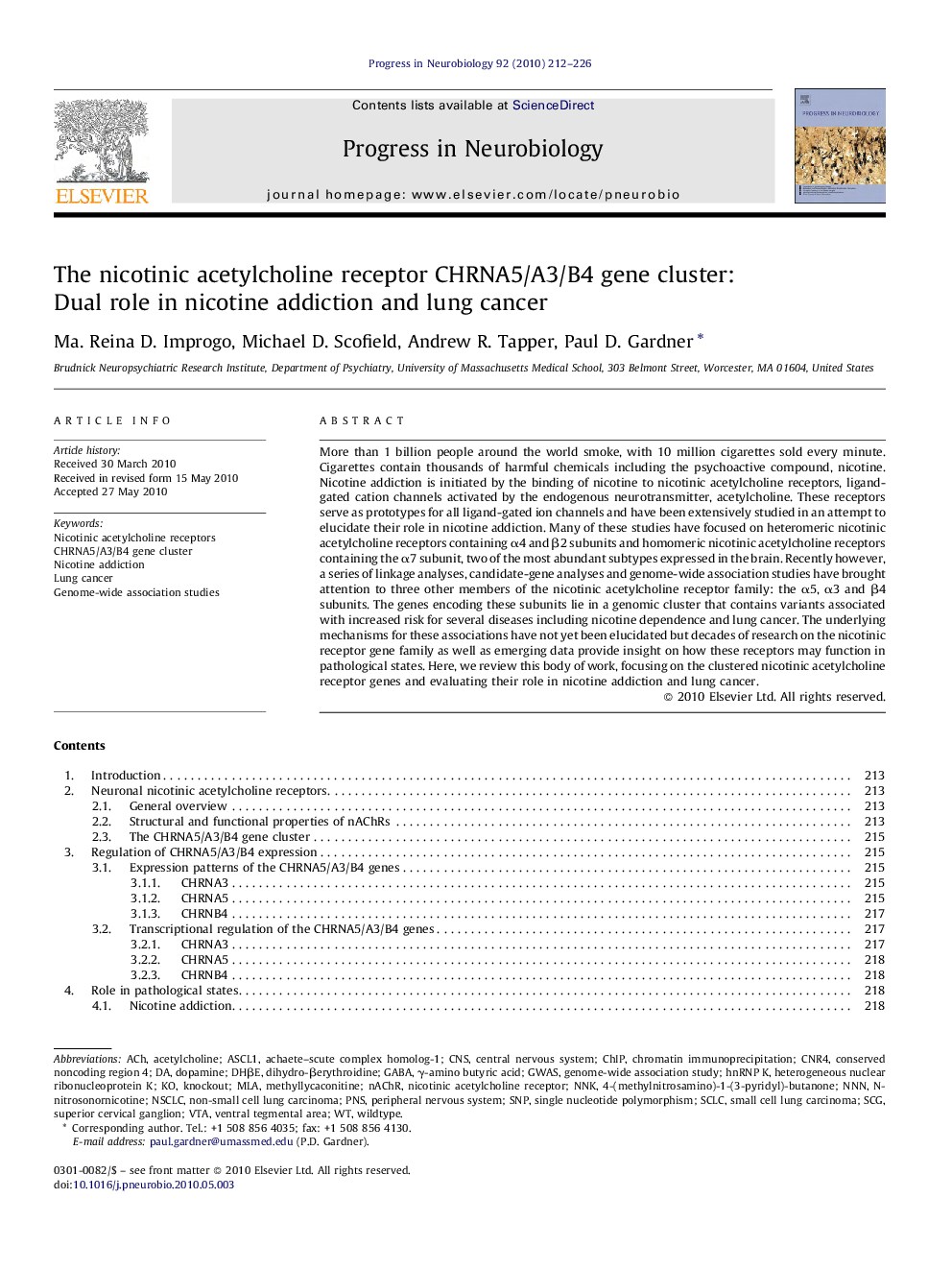| Article ID | Journal | Published Year | Pages | File Type |
|---|---|---|---|---|
| 4353679 | Progress in Neurobiology | 2010 | 15 Pages |
More than 1 billion people around the world smoke, with 10 million cigarettes sold every minute. Cigarettes contain thousands of harmful chemicals including the psychoactive compound, nicotine. Nicotine addiction is initiated by the binding of nicotine to nicotinic acetylcholine receptors, ligand-gated cation channels activated by the endogenous neurotransmitter, acetylcholine. These receptors serve as prototypes for all ligand-gated ion channels and have been extensively studied in an attempt to elucidate their role in nicotine addiction. Many of these studies have focused on heteromeric nicotinic acetylcholine receptors containing α4 and β2 subunits and homomeric nicotinic acetylcholine receptors containing the α7 subunit, two of the most abundant subtypes expressed in the brain. Recently however, a series of linkage analyses, candidate-gene analyses and genome-wide association studies have brought attention to three other members of the nicotinic acetylcholine receptor family: the α5, α3 and β4 subunits. The genes encoding these subunits lie in a genomic cluster that contains variants associated with increased risk for several diseases including nicotine dependence and lung cancer. The underlying mechanisms for these associations have not yet been elucidated but decades of research on the nicotinic receptor gene family as well as emerging data provide insight on how these receptors may function in pathological states. Here, we review this body of work, focusing on the clustered nicotinic acetylcholine receptor genes and evaluating their role in nicotine addiction and lung cancer.
Research highlights▶ Nicotine addiction is the most preventable cause of death in the United States. ▶ Lung cancer is the leading cause of cancer-related deaths worldwide. ▶ Nicotinic receptors function in both neuronal and non-neuronal systems. ▶ Several genetic variants have been found in the CHRNA5/A3/B4 gene cluster. ▶ Variants in CHRNA5/A3/B4 are associated with nicotine addiction and lung cancer.
